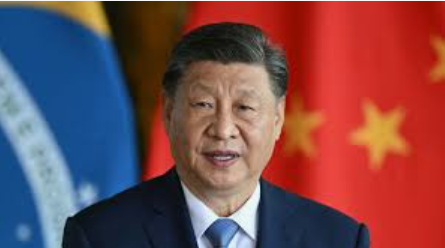The escalating trade tensions between the United States and China reached a new peak with the announcement of sweeping new tariffs by the US administration. The move, spearheaded by President Donald Trump, imposed a 10% levy on a wide range of imports globally, including significant increases on goods from key trading partners. China bore the brunt of these escalated tariffs, facing a staggering 34% duty on its exports to the US, a move that quickly drew sharp condemnation from Beijing. The Chinese Ministry of Commerce denounced the tariffs as a violation of international trade norms, arguing that they jeopardized the legitimate interests of involved parties and posed a significant threat to the stability of the global economy. China’s response was swift and resolute, vowing retaliatory “countermeasures” to protect its own economic interests and condemning the US actions as “unilateral bullying.”
China’s Ministry of Commerce issued a stern rebuke of Washington’s protectionist policies, highlighting the potential for widespread damage to international supply chains and the US’s own economic standing. While acknowledging ongoing communication channels between the two nations regarding trade and economic disputes, the ministry underscored the gravity of the situation. Beijing’s Foreign Ministry echoed this sentiment, cautioning the US against pursuing protectionist policies that lack an “exit ramp” and pointed to international disapproval of the measures. The escalating tariffs, building upon a previous 20% duty imposed earlier, signaled a deepening trade conflict with far-reaching implications. China’s prior response to US tariffs included levies of up to 15% on American agricultural products such as soybeans, pork, and chicken, indicating its willingness to retaliate.
The potential for further escalation loomed large as experts weighed in on China’s possible countermeasures. Chen Wenling, chief economist at the China Center for International Economic Exchanges in Beijing, suggested that China could leverage its position as a supplier of critical and rare minerals by imposing export controls on these resources to the United States. This move could significantly impact various US industries reliant on these materials. Furthermore, Chen pointed to the erosion of the US’s traditional role as a champion of free trade, characterizing it as a “high-tariff nation.” The escalating tariffs posed a considerable threat to China’s economic recovery, which was already grappling with a debt crisis in the property sector and consistently weak consumer spending.
The heightened trade war threatened to undermine China’s reliance on exports for strong economic growth in the current year, despite record-high export figures in 2024. While President Trump justified the tariffs as “reciprocal” measures, many experts challenged the administration’s assessments of levies imposed on US imports by other countries, arguing that these figures were significantly inflated. China directly challenged the US justification, asserting that the claim of losses in international trade was a pretext for imposing tariffs on trading partners. Beijing emphasized the imbalance created by these tariffs, disregarding years of multilateral trade negotiations and the US’s long-standing benefits derived from international trade.
China advocated for a dialogue-based approach to resolve the trade dispute, stressing that trade wars yield no winners and protectionism offers no viable solution. The statement underscored the historical precedent that tariff increases have not effectively addressed the US’s internal economic challenges. The escalating tensions extended beyond the targeted tariffs on Chinese goods, with the US also imposing a 25% duty on steel and aluminum imports. Although China is the world’s leading steel producer, its exports of this product to the US are relatively minor, suggesting a broader strategy behind the US tariffs.
The intensifying trade war between the US and China represents a significant shift in the global trade landscape. While the two nations engaged in ongoing communication, the escalating tariffs underscored the deep divisions and the potential for a protracted conflict. The impact on global supply chains, economic growth in both countries, and the future of international trade relations remained uncertain, highlighting the critical need for a negotiated resolution to prevent further escalation and lasting economic damage. China’s firm stance against the US tariffs and its commitment to retaliatory measures signaled a determined approach to protecting its economic interests, setting the stage for a complex and potentially disruptive period in US-China relations.














